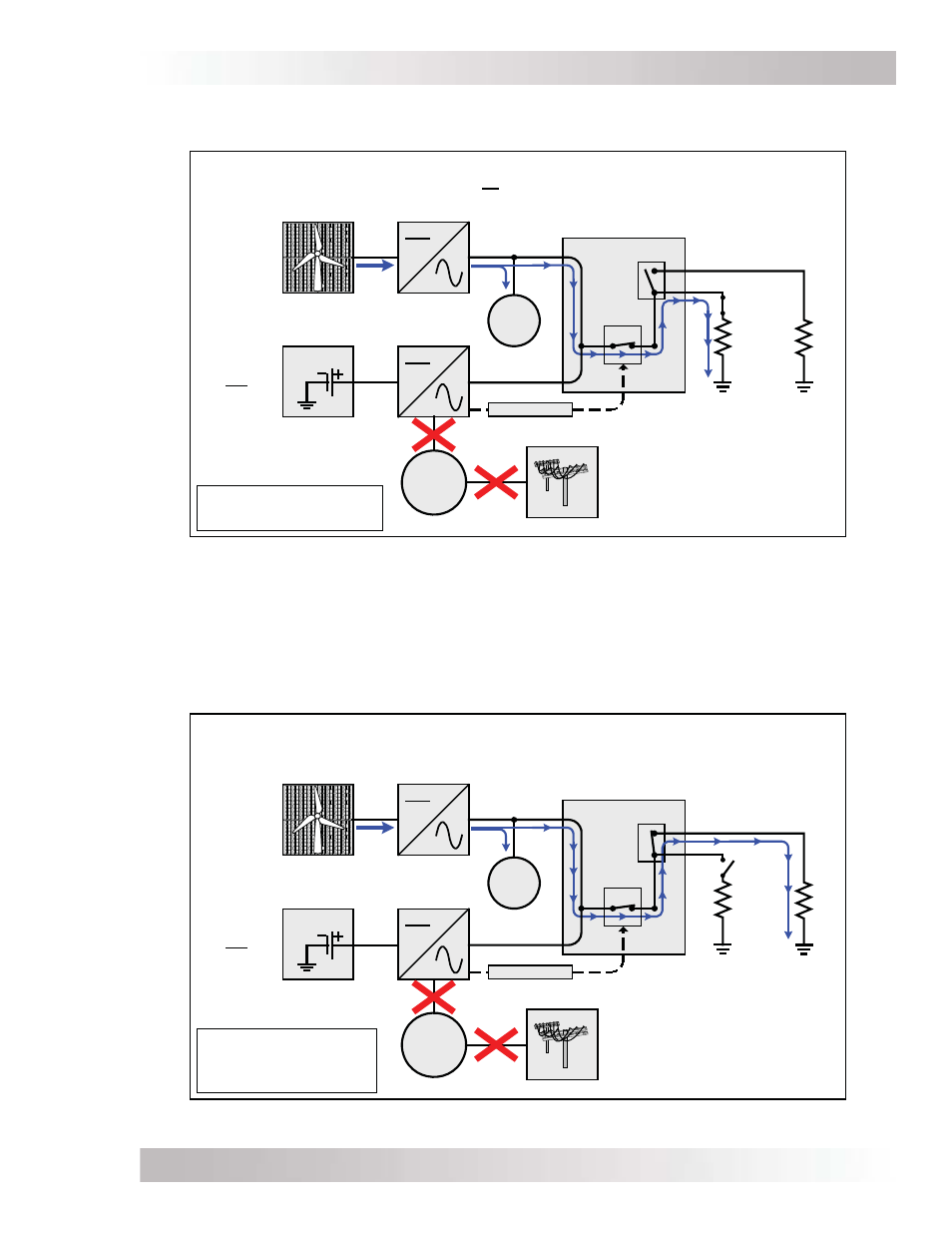Operation – Magnum Energy AC Load Diversion Controller (ACLD-40) User Manual
Page 36

Page 29
©
2015 Sensata Technologies
Operation
Relay
PWM
Switch
Grid-Tie
Inverter
ACLD Controller
(Active)
Renewable
Energy
MS-PAE Series
Inverter
Battery
Bank
Battery
Full
Critical
Loads
Utility Not Connected – Diverting Power to Secondary Load
(Primary load turns off - ACLD connects secondary load to prevent battery overcharge)
Relay
Note: The ACLD is still Active, and
connects the secondary load
because the primary load has
turned off or is not able to divert
the current away from the battery.
Main
Household
Loads
Utility
Grid Power
Secondary
Load
(Powered, and
always on)
Primary
Load
(Turned Off)
MagNet Control
Figure 3-9, Utility not Connected - Diverting Power to Secondary Load
If the primary load is not large enough to consume all the excess power or turns off, the ACLD
will activate an internal relay to connect a secondary load in parallel with the primary load. The
secondary load must always be on and available, and sized to handle the full current capacity of the
renewable energy source to prevent the battery bank from being over-charged (see Figure 3-9).
Relay
PWM
Switch
Grid-Tie
Inverter
ACLD Controller
(Active)
Renewable
Energy
MS-PAE Series
Inverter
Battery
Bank
Battery
Full
Critical
Loads
Utility Not Connected – Diverting all Power to Primary Load
(ACLD connects primary load to divert all excess current to prevent battery overcharge)
Note: The ACLD is still Active, and
when the battery is full, all the power
is diverted to the primary load.
Main
Household
Loads
Utility
Grid Power
Secondary
Load
(Not Powered)
Primary
Load
(Powered)
MagNet Control
Figure 3-8, Utility not Connected - Diverting all Power to Primary Load
Once the battery becomes full, the PWM switch inside the ACLD fully closes to divert all the excess
current from the battery to an externally connected primary load (see Figure 3-8).
